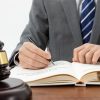Efficiency and durability are two critical factors when evaluating sealants for building and construction.
Traditional sealants, such as silicone, polysulfide, and polyurethane, have been used for many years and are known for their adhesive properties and range of applications.
When comparing traditional sealants to options like Pipetite, it is important to consider the ease of installation, the ability to maintain a sanitary seal, and the long-term performance under various environmental conditions.
Manufacturers of innovative sealing solutions claim enhanced performance, boasting features like a high elastic recovery rate and strong bonding properties, which could result in reduced maintenance costs and longer service life.
Analyzing these claims through comparative studies can provide a clearer picture of which solutions stand up to the rigors of modern construction and which may fall short.
Key Takeaways
- Sealant efficiency and ease of installation are critical in construction.
- Innovative sealants may offer advantages over traditional options.
- Comparative studies are necessary for informed decisions on sealant durability.
Comparative Analysis of Sealant Efficiency
The efficacy of sealants in commercial construction largely depends on their ease of application, bond strength, and resilience to environmental conditions. Contractors must choose products that not only promise longevity but also facilitate a straightforward application process.
Ease of Application and Maintenance
Pipetite products facilitate a sanitary, flexible seal around pipes and tubes, designed for easy installation without wall plates or caulking. In contrast, traditional sealants often rely on meticulous surface preparation and precise application to ensure proper adhesion. The maintenance of CSI pipetites is minimal, owing to their inherent design, which allows for movement while maintaining a seal, reducing the frequency of repairs and replacements.
Adhesion and Bond Strength
The bond strength of a sealant is critical to its performance. Pipetite’s sealing solutions adhere securely even in the presence of movement. Traditional urethane and silicone sealants require a dry field for optimum adhesion, which can be compromised by applicator error or unfavorable conditions. Elastomeric sealants, by nature, can offer excellent adhesion and flexibility, but they must be applied correctly to achieve their full potential.
Climate Resilience and Environmental Exposure
An ideal sealant withstands outdoor weathering, temperature fluctuations, and exposure to solar radiation. Silicone sealants offer impressive resilience to ultraviolet light and temperature extremes but may degrade under constant outdoor weathering.
In comparison, materials like Pipetite are engineered to endure harsh environmental conditions, including high humidity and accelerated weathering, without significant degradation, ensuring an extended service life and sustained efficiency under varying climatic stresses.
Durability Assessment of Sealant Options
Durability is a critical factor when comparing Pipetite to traditional sealants. This assessment focuses on longevity, tolerance to movement, and strategies to prevent failure, ensuring the sealed joints maintain integrity over their service life.
Longevity and In-Service Performance
Traditional sealants, including silicones and other chemistries, are formulated to withstand various environmental conditions over an extended period. In the context of durability, long-term performance is a vital measure, as it indicates how well a sealant will hold up under normal in-service conditions.
Literature suggests that accelerated testing can approximate the durability of sealants like those used in structural sealant glazing systems. Similarly, Pipetite’s design aims to offer lasting effectiveness, though its service life may vary depending on environmental exposure and material composition.
Impact of Movement and Stresses on Performance
Sealed joints are subjected to stress and movement, including cyclic movement, which can challenge a sealant’s integrity. The performance of a sealant is heavily influenced by its modulus and stiffness, factors that dictate how it responds to these forces.
Traditional elastomeric joint sealants typically offer flexibility to absorb such movements, whereas Pipetite relies on its unique, mechanically-sealed design to manage movement without compromising the seal. The durability under these conditions can predict potential premature failure or deterioration.
Failure Analysis and Prevention
To prevent failure, it’s crucial to understand the modes of deterioration and cohesion loss within sealant systems. Failure analysis is the process of investigating breakdowns, often leading to improved formulations and application methods.
Traditional sealant failures are commonly due to loss of adhesion or cohesive breakdown, whereas Pipetite’s design minimizes reliance on adhesive qualities, theoretically reducing failure risks. Continuous development and improvement through research guide advancements in traditional and modern sealing solutions like Pipetite, aiming to enhance their repair profiles and extend their service life.
Conclusion
Pipetite’s innovation offers distinct advantages in flexibility and adaptability compared to traditional sealants, contributing to its efficiency and durability. The economic aspect also favors sealant-free solutions, which can yield long-term cost savings with less frequent replacements and reduced downtime.
It is crucial for industries, particularly those with systems experiencing extreme conditions, to consider the long-term performance and sealing efficiency of these options. Choosing between Pipetite and conventional sealants hinges on the specific needs for maintenance, environmental resistance, and overall longevity that the application demands.
Read Also:






















